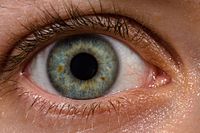
Photo from wikipedia
The success rate from investigational new drug filing to drug approval has remained low for decades despite major scientific and technological advances, and a steady increase of funding and investment.… Click to show full abstract
The success rate from investigational new drug filing to drug approval has remained low for decades despite major scientific and technological advances, and a steady increase of funding and investment. The failure to demonstrate drug efficacy has been the major reason that drug development does not progress beyond phase II and III clinical trials. The combination of two-dimensional (2D) cellular in vitro and animal models has been the gold standard for basic science research and preclinical drug development studies. However, most findings from these systems fail to translate into human trials because these models only partly recapitulate human physiology and pathology. The lack of a dynamic three-dimensional microenvironment in 2D cellular models reduces the physiological relevance, and for these reasons, 3D and microfluidic model systems are now being developed as more native-like biological assay platforms. 3D cellular in vitro systems, microfluidics, self-organized organoids, and 3D biofabrication are the most promising technologies to mimic human physiology because they provide mechanical cues and a 3D microenvironment to the multicellular components. With the advent of human-induced pluripotent stem cell (iPSC) technology, the 3D dynamic in vitro systems further enable extensive access to human-like tissue models. As increasingly complex 3D cellular systems are produced, the use of current visualization technologies is limited due to the thickness and opaqueness of 3D tissues. Tissue-clearing techniques improve light penetration deep into tissues by matching refractive indices among the 3D components. 3D segmentation enables quantitative measurements based on 3D tissue images. Using these state-of-the-art technologies, high-throughput screening (HTS) of thousands of drug compounds in 3D tissue models is slowly becoming a reality. In order to screen thousands of compounds, machine learning will need to be applied to help maximize outcomes from the use of cheminformatics and phenotypic approaches to drug screening. In this chapter, we discuss the current 3D ocular models recapitulating physiology and pathology of the back of the eye and further discuss visualization and quantification techniques that can be implemented for drug screening in ocular diseases.
Journal Title: Advances in experimental medicine and biology
Year Published: 2019
Link to full text (if available)
Share on Social Media: Sign Up to like & get
recommendations!